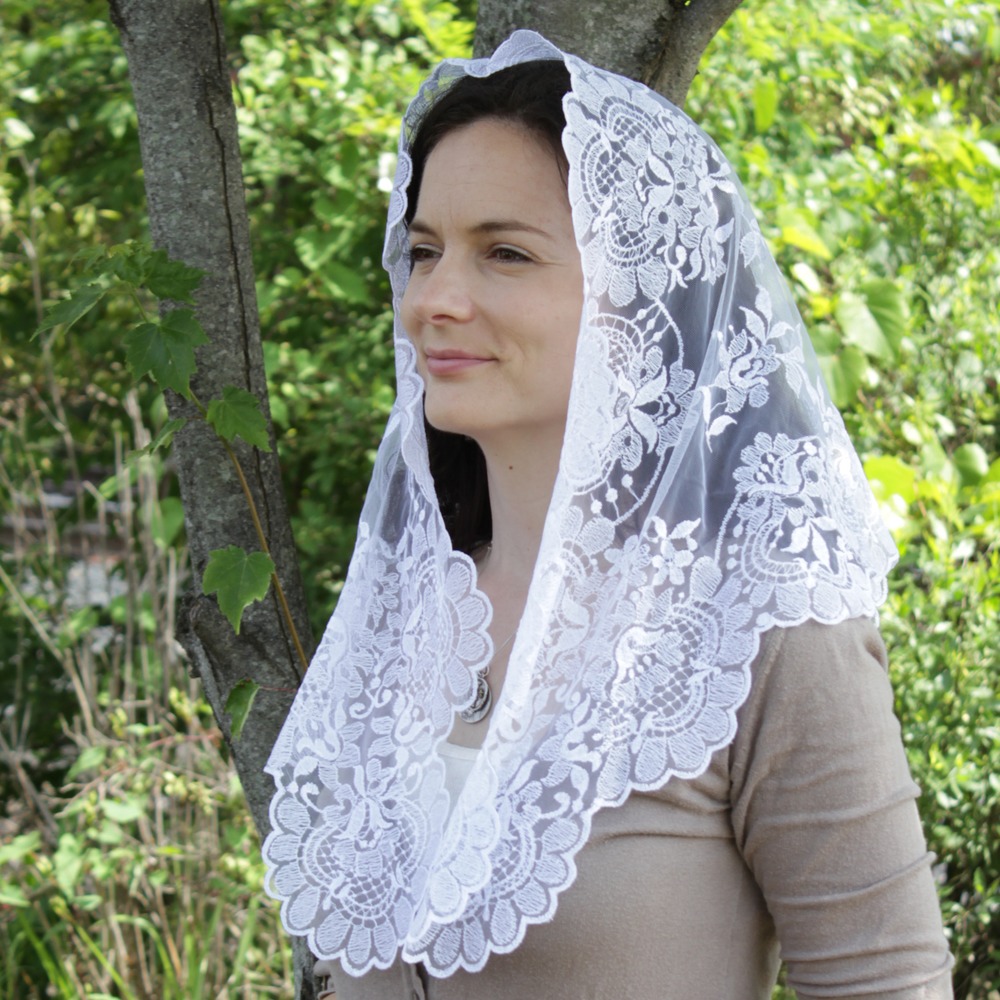Since the early days of Christianity, wearing chapel veils has been a common practice among faithful women. Chapel veils, also commonly called mantillas, which comes from the word manta, meaning cape, are typically circular or triangular shaped pieces of black or white lace that are draped over a woman’s head when attending Mass, or in the presence of the Blessed Sacrament. Traditionally, the black veils were worn by married or widowed women, while the white veils were worn by young girls, or unmarried women.

Before the Second Vatican Council, the wearing of chapel veils was required for a woman when attending Mass, as a symbol of her modesty and humility before God. Although this practice is no longer required, it is still very much supported and encouraged by the Church as a sign of reverence and piety while in the presence of God.
[[12172]]